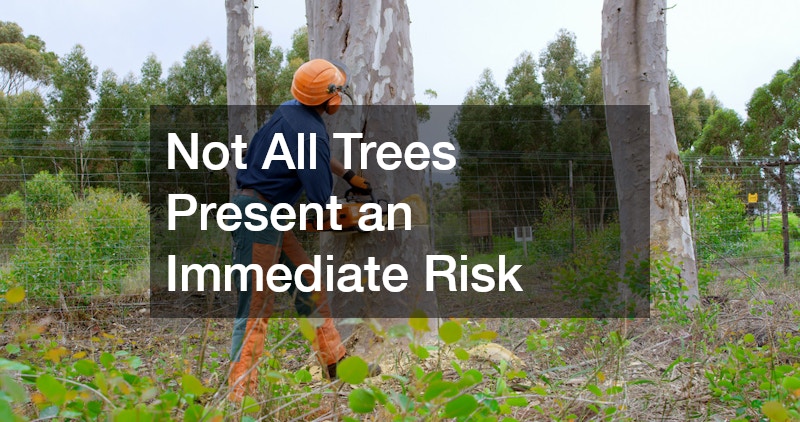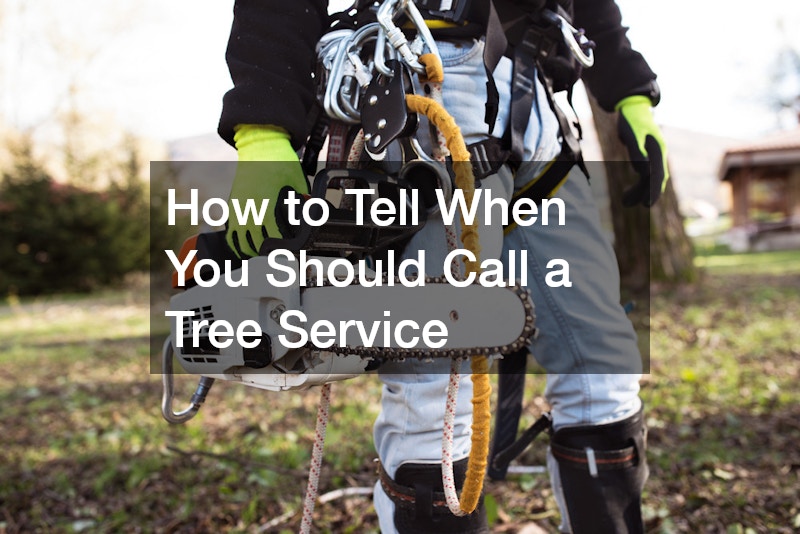Trees are vital components of our environment, providing shade, improving air quality, and enhancing the aesthetic appeal of our landscapes. Proper care and maintenance of trees are essential for their health and the safety of people and property around them. Many homeowners and property managers may wonder when seeking professional assistance is appropriate. Recognizing the signs that a tree needs intervention can prevent serious problems and costly damage. Engaging a reliable tree service at the right time ensures trees remain healthy, safe, and visually appealing.
Tree care isn’t always straightforward, as trees can hide internal problems that aren’t immediately visible. A healthy tree on the surface may still have structural weaknesses, disease, or pest infestations that could lead to failure.
By understanding the subtle and obvious indicators of tree distress, property owners can make informed decisions about when to call a professional. A timely assessment from a certified tree service can save the tree and the surrounding property, avoiding hazards before they become emergencies.
Signs of Tree Damage That Require Professional Attention
Like any living organism, trees can experience damage from environmental factors, weather events, or human activities. Common signs of stress include broken branches, cracks in the trunk, or visible decay. Recognizing these signs early allows homeowners to take action before the damage worsens and the risk of accidents increases. Tree damage can range from minor aesthetic concerns to serious structural weaknesses threatening property and personal safety.
More specifically, indicators such as significant splits in the trunk, extensive bark loss, or limbs that are hanging unusually low are strong reasons to call a tree service. These damages often result from storms, heavy snow, or lightning strikes. A professional can assess whether the tree can be salvaged or removal is the safest option. Ignoring these warning signs can lead to costly repairs or even personal injury if the tree fails unexpectedly.
Identifying Hazardous or Unstable Trees
Not all trees present an immediate risk, but some may be unstable due to their structure or location. Hazardous trees often have uneven canopies, leaning trunks, or root systems that are exposed or compromised. Identifying structurally unsound trees is critical to preventing accidents. Safety considerations should always be prioritized when evaluating potential landscape risks.
In a more specific context, trees that lean significantly to one side, have root rot, or show signs of root lifting are particularly dangerous. Such instability may worsen during storms or high winds. A certified tree service can evaluate the tree’s stability using specialized tools and techniques, determining whether pruning, bracing, or removal is the best course of action. Addressing unstable trees proactively protects both the property and the people around it.
Recognizing Disease and Pest Infestations
Various diseases and pests can compromise tree health and spread rapidly if left untreated. Common symptoms include discolored leaves, unusual growths, or excessive leaf drop. Recognizing these issues early helps preserve the tree’s overall health and prevents infestations from affecting nearby vegetation. Professional intervention is often necessary because identifying and treating diseases and pests requires experience and specialized knowledge.
For example, fungal infections like cankers, root rot, or infestations from insects such as borers and aphids can weaken a tree’s structure and make it more prone to falling. A tree service can diagnose the problem and recommend treatment, including pruning, chemical applications, or other interventions. Timely action prevents minor issues from escalating into severe damage that could threaten surrounding structures or other plants.
Assessing Risks to Property and Safety
Trees located near homes, power lines, or public spaces require regular assessment to ensure they don’t pose a threat. Risk factors include proximity to structures, potential for falling limbs, and exposure to heavy traffic areas. Evaluating these risks allows homeowners to make informed decisions about maintenance and intervention. A systematic risk assessment can prevent accidents, reduce liability, and maintain the property’s value.
Specifically, a tree that overhangs a roof, swings near a driveway, or is close to play areas may require immediate attention. Weak branches or unstable trees can cause significant damage during high winds or storms. A professional tree service can conduct a thorough evaluation, often using aerial inspections and stability tests, to determine if pruning, cabling, or removal is necessary to protect people and property.
Trees contribute beauty, shade, and ecological benefits to any property, but also require vigilance to ensure they don’t pose risks. Understanding the signs of damage, instability, disease, or hazardous placement is crucial for safety and tree health. While routine maintenance supports general tree well-being, professional intervention is often necessary when warning signs appear. A knowledgeable tree service can provide assessments, treatments, and preventive care that protect the trees and the people around them.




